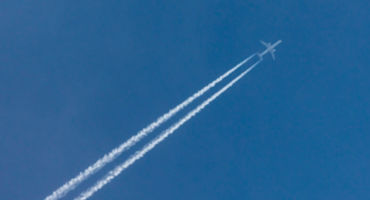- 固定收益投資組合經理
Skip to main content
- 基金中心
- 投資實力
- 投資見解
- 關於我們
本刊所載見解反映作者於撰文時的觀點,其他團隊可能觀點各異,或會作出不同的投資決策。閣下投資的價值可能高於或低於初始投資時的水平。本刊所載第三方數據被視為可靠,惟概不保證其準確性。
僅提供英文版本
An inverted US Treasury yield curve is often viewed as a reliable recession indicator, so the significant flattening of the curve over the past few months — and in an environment of persistent inflationary pressures, to boot — has some economic prognosticators calling for an impending US recession. I say not so fast.
While I acknowledge that the economic outlook will likely deteriorate at the margin as monetary policy tightens, particularly if energy prices remain elevated, I do not believe the recent flattening of the yield curve portends a US recession in the near term. US consumer balance sheets look very healthy, household savings rates are robust, and rising worker wages may help cushion against the impact of higher goods and energy prices. Furthermore, the US should remain relatively shielded from today's uncertain geopolitical landscape, given its lower oil imports from Russia and its greater domestic oil production compared to Europe.
The recent flattening (and inversion) between the two-year and 10-year parts of the yield curve has been primarily driven by the increase in short-term yields following the more aggressive policy tightening stance adopted by the US Federal Reserve (Fed) in response to stubborn inflationary pressures. Yet the three-month and 10-year "shape" of the curve — historically a more reliable recession indicator — still has a ways to go before inverting, given that the Fed has only just begun to hike the fed funds rate (Figure 1).
The Fed intends to tighten financial conditions in an effort to alleviate the effects of higher inflation, but it will likely be mindful of the attendant risks to the economic cycle. Specifically, I expect the Fed to remain keenly cognizant of the danger of tightening policy too aggressively against a backdrop of heightened geopolitical tensions. This type of measured approach should further contribute to the "stickiness" of inflation and could raise the odds of a stagflationary outcome (i.e., high inflation in tandem with slowing growth).
That being said, I think a lot would need to go wrong in order for US economic growth to contract in the period ahead. All else being equal, it would likely take one to two years of steady Fed interest-rate hikes for tighter monetary policy to tip the US economy into recession. Projections by the Fed and futures markets have the policy rate increasing to 2.8% and 2.6%, respectively, by the end of 2023 — only slightly above the neutral rate and not overly restrictive, in my view.
While inflation can indeed erode the returns provided by traditional high-grade, rate-sensitive fixed income assets, I believe a number of bond sectors can prove resilient and even be net beneficiaries of higher inflation, including persistently elevated energy prices.
Obvious choices for sectors that can potentially benefit from inflation include bank loans (given the floating-rate nature of their coupons, which reset higher as interest rates rise) and Treasury Inflation-Protected Securities, aka TIPS (since their coupons are directly indexed to, and thus protected from, inflation). I also expect high-yield corporates, convertible bonds, securitized credit, and emerging markets (EM) local debt to outperform most traditional high-grade fixed income sectors in a rising-rate/high-inflation environment, particularly if the global economic expansion continues throughout 2022 and beyond. Some points to consider:
While my outlook for the US credit cycle has worsened somewhat on the back of tighter financial conditions and significant inflationary pressures, I still do not believe a central bank-induced recession is around the corner. I am seeing plenty of investment opportunities in today's environment in spite of — in fact, because of — the high levels of economic uncertainty and market volatility that have characterized 2022 so far.

參考網站連結
相關投資見解

投資專家快問快答:Ross Dilkes
在本期《快問快答》系列短片中,我們邀請固定收益投資組合經理Ross Dilkes分享其對亞洲信貸債券市場的觀點,涵蓋宏觀經濟前景、中國市場動力、區內最吸引的機會,以及影響未來12個月市況的主要風險。

新經濟時代:投資組合實用考量
投資方案總監 Andrew Sharp Paul 就新經濟時代探討投資組合的實際考慮因素,當中包括聚焦優質股票、慧眼識債,以及亞太區內的投資機遇。

焦點圖解:長期收益率上升有何啟示?
市場對結構性增長及財政擴張政策的憂慮帶動長期收益率攀升。在本期「焦點圖解」,我們探討收益率曲線的變化如何重塑不同資產類別的投資機會。

焦點圖解: 聯儲局重啟減息—投資者該如何部署?
本期「焦點圖解」探討聯儲局在策略性按兵不動後重啟減息的情況。我們剖析此舉以及各國央行的分化路徑如何影響風險資產的前景。


債券投資者不容忽視的兩個關鍵問題
在年中債市展望,投資總監Amar Reganti及Marco Giordano,與投資組合經理Campe Goodman探討債券投資者在2025年下半年可能關注的兩個關鍵問題。

投資精英匯:如何為關稅、國債及稅務作出部署?
在威靈頓投資管理第二輯的「投資精英匯」播客中,固定收益策略師Amar Reganti 與固定收益投資組合經理 Connor Fitzgerald對談,探討現時在債券市場的相對價值機遇。

投資精英匯 (InvestorExchange):在波動市況中的債券投資
在威靈頓投資管理最新推出的「投資精英匯」播客中,固定收益策略師Amar Reganti 與多元債券投資主管 Campe Goodman對談,盤點最新市場形勢。

投資專家快問快答:Campe Goodman
在本期《投資專家快問快答》系列短片中,我們請來Campe Goodman就信貸市場展望解構四大關鍵問題。

為何美元的「扭曲微笑」或會顛覆資產配置
固定收益投資組合經理Brij Khurana探討在貨幣波動的環境下,美元微笑理論對資產配置及外國投資者策略的影響。

聚焦靈活配置:如何配置固定收益組合以應對波動市況
兩位固定收益投資專家探討如何聚焦靈活配置固定收益組合以應對波動市況。 (僅提供英文版)
參考網站連結
相關投資見解
重要披露
在未有威靈頓投資管理明確書面批准的情況下,概不可複製或轉載本刊全部或任何部分內容。本文件僅供參考之用,並非任何人士要約或邀請認購威靈頓投資管理(盧森堡)SICAV基金III系列的股份。本文件所載資料不應被視為投資建議,亦非買賣任何股份之推介。基金投資不一定適合所有投資者。所載見解反映作者於撰文時的觀點,可予更改而不作另行通知。投資者於作出投資決定前,務請細閱基金及子基金的產品資料概要、基金招股章程及香港說明文件,以了解詳情(包括風險因素),其他有關文件包括年度及半年度財務報告。
© 2025 Morningstar, Inc。版權所有。本刊所載資訊:(1) 為晨星(Morningstar)專有;(2) 不得複製或分發;及(3) 概不保證屬準確、完整或及時。晨星及其內容提供者概不就使用相關資訊所引致的任何損害或損失負責。基金的Morningstar綜合星號評級(Overall Morningstar Rating)乃基於經風險調整回報,按三年、五年及十年(倘適用)評級的加權平均得出。過去業績並非將來表現的保證。
由威靈頓管理香港有限公司刊發。投資涉及風險。過去業績並不代表將來表現。本文件未經香港證券及期貨事務監察委員會審閱。